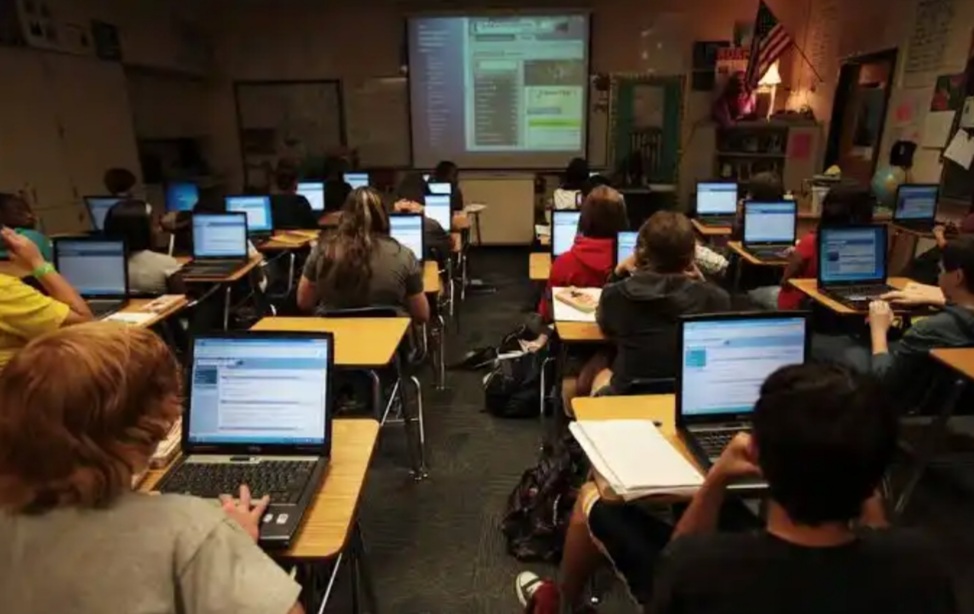The 21-century classroom is rich in technology. Teachers and administrators are constantly pressurized to implement technology in classes but the most commonly asked question of whether technology and E-learning can replace teachers in future classrooms remains.
The answer is no. Teachers play a pivotal role in curriculum delivery and cannot be replaced by technology-enhanced online educational programs but effectively organized technology can only complement the work of a teacher.
Teachers bring varied knowledge and life experiences in a classroom setting which are far much beyond what an advanced computer program can do or what an online tutor can do.
Here are reasons why a classroom teacher cannot be replaced by technology/online/Virtual teaching;
1. Virtual Classroom is not real.
In nature, the virtual classroom is not completely real and hence can’t replace the traditional classroom. Teaching in a classroom setting may seem like a thing of the past, but it brings teaching and learning into reality especially when leading, instructing and engaging students in any type of classroom setting.
Teaching online or on the internet involves teaching in virtual reality but not in reality. Teachers, students, learning materials and the atmosphere in a classroom setting are real and that is why virtual teaching or technology can’t replace classroom teaching.
2. Real-Life Classroom enhance interaction unlike Online Classes/ Virtual classes
In real-life classrooms, teachers engage students, encourage participation from the entire class and the ideals and thoughts raised by the students can be expounded unlike in the online classes.
It is possible to have a spontaneous and random student to teacher, teacher to student, and student to student interaction through questions, responses or opinions in a real-life classroom.
Also in a real-life classroom, a face to face communication between a teacher and students or student and student is enhanced.
Studies by Kent State University found that many students are discouraged if there is no engagement because of lack of engagement and feelings of isolation which is common in online/virtual classes.
3. Real-life Classroom enhance Socialization and Support
In a real-life classroom, there is ample opportunity for social interaction and support among the students. Student can speak to fellow students and seek support when need arise.
For instance, a student who learns mathematics online may not have similar experiences with the student who learns the same mathematics concept in a real-life classroom.
Students in a classroom can help each other in sharing hints ideas and thoughts.
4. Availability and Access to facilities/resources.
Students in the real-life classroom can access all the available facilities and resources. In virtual/ online classes students cannot access important facilities such as laboratories and libraries.
5. In real-life classroom enhances teacher inspiration
The most successful people cannot miss narrating a story of the teacher in one way or the other who inspired them. One of the aspects that unite human experiences is having a teacher of inspires. Teaching information and content is not enough if there is no inspiration.
Teachers are trained to inspire their learners. It is impossible to program a computer to inspire like a teacher.
6. In real life Classroom transference is possible
E-learning/ online classes or the use of computers in teaching and learning is not reliable when new situations emerge. In real-classroom teaching and learning, transference is possible especially when new or unique situations arise.
7. In real-life Classrooms more learning activities can be done.
Real-life classroom teaching and learning opens more opportunities for numerous learning activities such as debates, group discussions and practicals in the case of science subjects. Students can work in groups to discuss and comprehend better challenging concepts in different subjects/courses.
Summary
The role of a teacher does not solely lie in imparting knowledge or relaying the information neither teaching is not only about facts and figures. Teachers are role models, mentors, facilitators, leaders and counsellors to their students.
A teacher influences his or her students through inspiration to achieve set goals. The bond of relationship between teachers and students enhances a perfect learning environment that cannot be attained via online/virtual learning.

